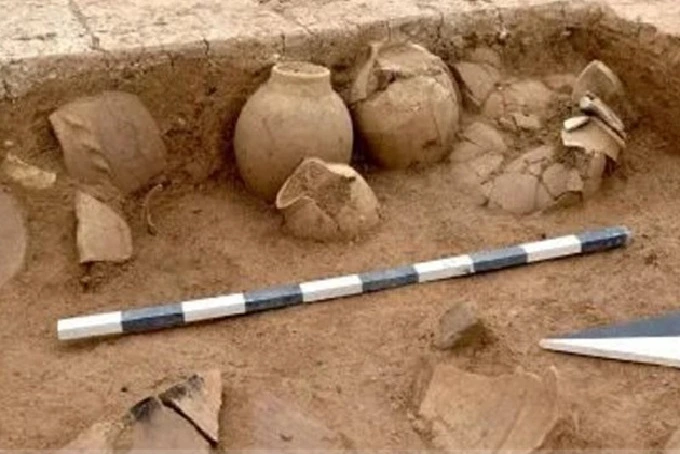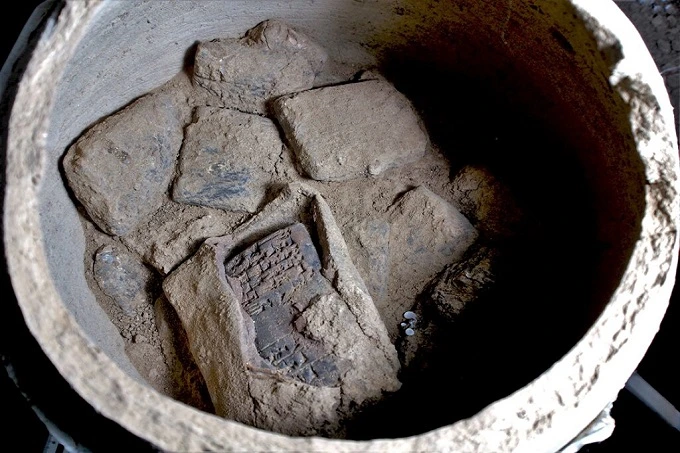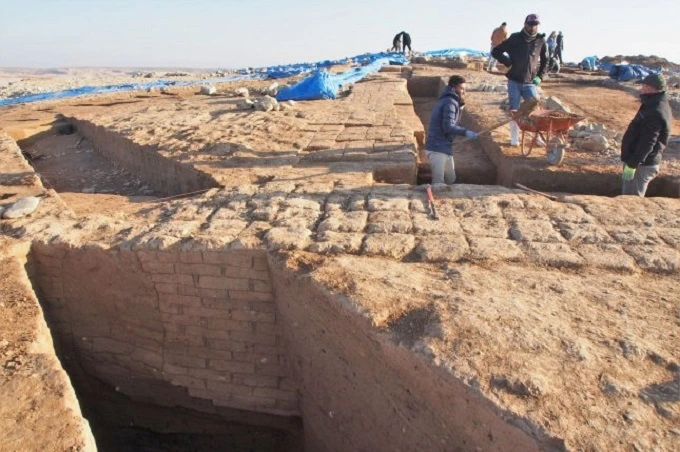Drought in Iraq exposed a 3,400-year-old city: What the long-flooded ancient metropolis was hiding

Recently, Iraq has been enduring one of the worst droughts. A precarious water situation has been made even worse as a result of poor resource management, in addition to the lack of rainfall that has occurred in the region. Both the Tigris and the Euphrates rivers are gradually becoming shorter. To rescue the crops, the authorities in Kurdistan decided to empty some of the reservoirs. Not only did the decision assist in salvaging the harvest, it also provided historians and archaeologists with an incredibly precious gift. The water buried beneath itself a metropolis that was 3,500 years old and belonged to an ancient empire that was once quite powerful.
The ruins of the genuine city of the big ancient empire of Mitanni can be found in the areas that have been opened up due to the drought. The construction of the city began 3,400 years ago. Almost quickly, archaeologists began their investigation of the ruins and even produced a map of the ancient city that was once so magnificent.
The natives knew this location was formerly home to a prosperous city. However, in the 1980s, a dam was constructed at this location. Everything still standing after a strong earthquake that struck this area in the 14th century was eventually destroyed by the water that followed. The floodwaters destroyed every precious antique and part of the once-beautiful buildings still standing. Researchers finally have the opportunity to conduct in-depth examinations of the remnants.

2018 marked the first occasion in many years when the city was seen above ground. Researchers were wasting not a single second of their time as they investigated the ruins of the magnificent palace. The ancient people built walls seven meters high and just over two meters thick. The height of the walls is one of the architectural marvels they left behind. These huge walls were adorned with lavish murals that were done in vivid hues of red and blue. The archaeologists were frustrated because the water returned before they could finish mapping all of the structures.
They finally have a chance to get caught up now that such a terrible drought has spontaneously developed, which is quite convenient for the scientific community. What the archaeological team is presently engaged in accomplishing today After the study team applied for and was granted emergency financing from the University of Freiburg, they got to work right away. They are planning to do as much exploring as possible before the city is flooded.
The great city of a long-forgotten great empire
The researchers in this field have pieced together a reasonably accurate picture of how this once-majestic city appeared. The majority of its many impressive structures have been plotted out. Historians research the hundreds of items that were found there. The buildings include the royal palace as well as residential and commercial structures, as well as warehouses and industrial complexes. All of this was hidden behind magnificently built and formidable walls. This location served as an exceptionally important administrative centre for the huge ancient empire of Mitanni.

Archaeologists have been incredibly shocked by how beautifully a significant portion of the walls has been preserved. After all, they were constructed out of clay baked in the sun, went through an earthquake, and were buried under water for several years. Unexpectedly well-preserved ceramic containers, each of which contained more than one hundred cuneiform tablets. Scientists discovered these. In addition to other measures, they were packaged carefully in specialized envelopes made of clay. According to the opinions of the specialists, such safety, under those circumstances, is unheard of. A team of experts is currently deciphering these texts. In a short amount of time, every secret will be exposed. The public will understand what the city was like and how people lived while it was inhabited.

According to the opinion of some researchers, this location once housed a metropolis known by the name Zakhiku. It was a major centre of the Mitanni Empire, which existed from 1500 BC to 1350 BC and had its zenith around 1350 BC. It was an ancient kingdom established in Mesopotamia and Syria by people of Indo-Iranian descent. At its height, the empire encompassed one thousand kilometres in size. The Zagros Mountains and the Mediterranean Sea were included in its territory, and its borders spanned from one to the other.

The climate crisis brought down the empire of Mitanni
At one point in history, Mitanni engaged in a brutal war with Egypt about who would rule Syria. As a result, a peace treaty was made with Pharaoh Thutmose IV in approximately 1420 BC. The empire was weakened as a result of climate change and persistent droughts. A short time later, the Hittite kingdom completely acquired Mitanni’s territory. Assyria eventually took control of this region after it had been conquered. Archaeologists were overjoyed to discover the once-powerful ancient empire’s once-beautiful capital city after being exposed to drought. Buildings have never previously been opened up to their potential. These kinds of occurrences are not uncommon everywhere in the world. For instance, the magnificent megalithic monument Dolmen Guadalperal in Spain was recently found. Its age ranges from 4,000 to 7,000 years old.

Iraq is facing many challenges as a direct result of global warming. Temperatures in this region are climbing at a rate two times faster than the global average. There has been a 10 percentage point drop in the yearly average rainfall. The result was that all the reservoirs and wetlands were dry. People are suffering from hunger and thirst, and livestock is beginning to perish. In this region, access to clean water is more valuable than gold.
The water level in the reservoir has been brought back to its previous level. The investigation into this matter has been stopped for the time being. To preserve the historical artefacts, the researchers covered the area with a tarp and weighted it down with boulders to keep it in place. The drought is not going to end any time soon. This is a catastrophe for the nearby people, and it won’t be long before these areas are utterly uninhabitable. This is considered a holiday by those in the scientific community. After all, much more interesting findings are yet in store for them. Over a hundred cities are concealed by floodwaters caused by the Tigris River alone.




